It’s that time of year again for one of Inflow’s most popular releases — our 2024 Best in Class eCommerce Conversion Optimization Report.
In this annual report, we review what top online retailers are doing with their conversion rate optimization. We look at user experience, checkout flows, page design, and more.
And, after our hundreds of hours of research are complete, we put it all together in one comprehensive matrix — so you and your team can learn from the best of the best.
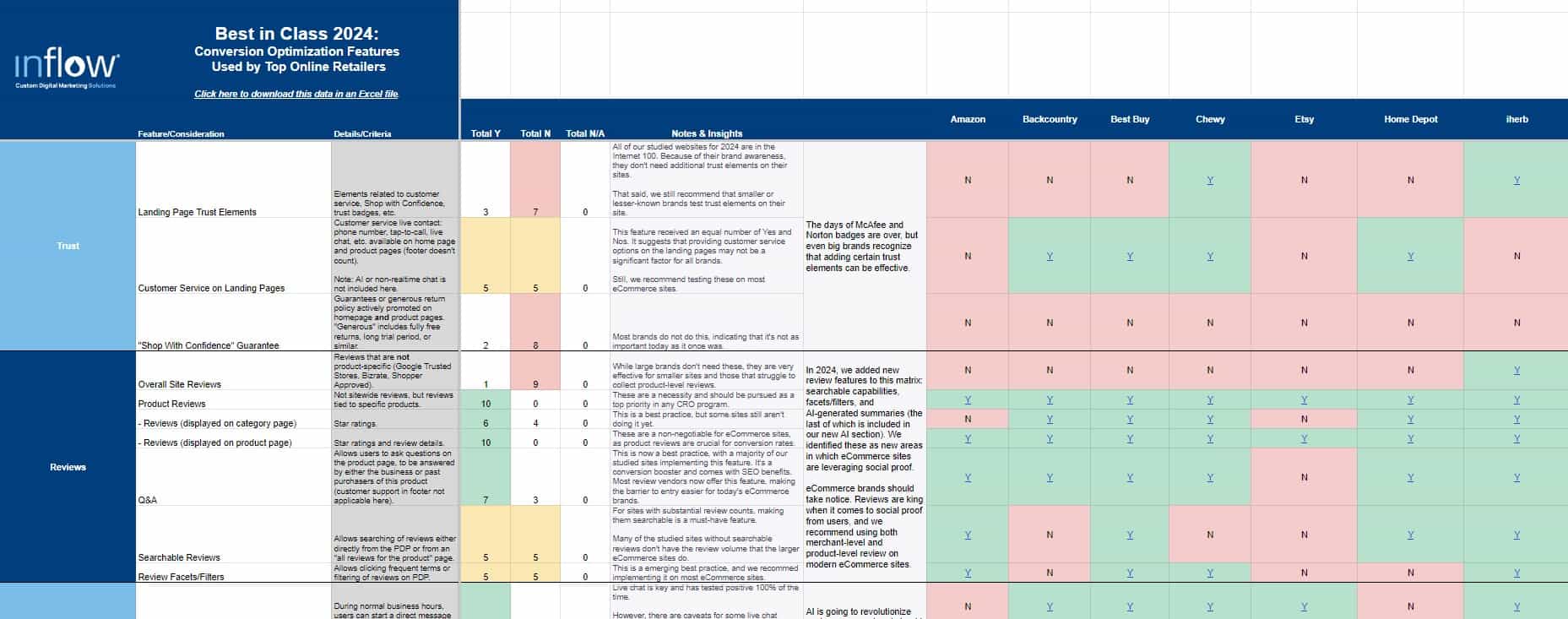
Today, we’ll share more about how we conducted this research, as well as some of the key insights we discovered along the way.
In the meantime, if you want the full report, you can download it for free now.
Read about previous years’ Best in Class reports below:
- eCommerce Best-in-Class Report 2023
- eCommerce Best-in-Class Report 2019
- eCommerce Best-in-Class Report 2018
- eCommerce Best-in-Class Report 2017
Our Methodology
Like in years before, our conversion rate optimization (CRO) team evaluated 10 subjectively selected “Best in Class” eCommerce websites. These encompass a range of business sizes, product offerings, and verticals — but all are, in our opinion, the best representations of modern eCommerce websites.
We then evaluated these sites for the checklist items listed in our matrix. Many of these items and site features are holdovers from our previous Best in Class reports, but some are new to our research in 2024.
Except for where stated in the matrix, all of these features were viewed from a desktop-first perspective.
Why?
Many websites introduce and test features from a desktop-first perspective to validate that the feature provides value — without having to also figure out the ideal stacking and other mobile-responsive tweaks needed to make it perform on mobile devices, as well. We always recommend testing and tracking results for desktop, mobile, and tablet when releasing new features to make sure any benefits aren’t overshadowed by stacking choices on mobile.
Where a clear indicator of each feature could not be determined (either because of unconventional site design or inconclusive findings across our team members), we used “N/A” rather than a “Yes” or “No” answer.
Best in Class eCommerce Websites for 2024
This year, our CRO team updated our list of studied sites to 10 that we identified as some of the best eCommerce websites when it comes to brand status and web design in their verticals.
In doing so, we added four new brands — Amazon, Etsy, The Home Depot, and Temu — which replaced 2023’s Lululemon, North Face, WarbyParker, and Wayfair.
These 10 sites are:
12 Key Insights from Our Research
In comparing this year’s findings to 2023, many eCommerce site best practices remain the same — but a few massive shifts in the digital marketing landscape have been reflected in site design and user experience in 2024.
Below, we’ve included just 12 of the 162 insights we discovered, focusing on the biggest new and emerging trends, legacy eCommerce best practices, and site features trending downward in 2024.
Note: Like most CRO features, consider any recommended best practices as starting points for your own site research and testing. Do not implement any across your website without extensive testing and evaluation.
If you want help creating a testing plan and creating the best eCommerce website design for your brand, contact our team of CRO experts today.
Emerging Trends
As you might expect, the biggest emerging trend in conversion optimization in 2024 is employing artificial intelligence to provide a more seamless, personalized online shopping experience for customers.
In fact, this is such a change from years past that, in our latest report, we’ve added an entirely new section in our matrix to accommodate these emerging best practices.
While not all of our studied sites have caught on quite yet, we’re anticipating nothing but upward growth for these features — and recommend all eCommerce sites start testing them to stay ahead of the curve.
AI Chatbots
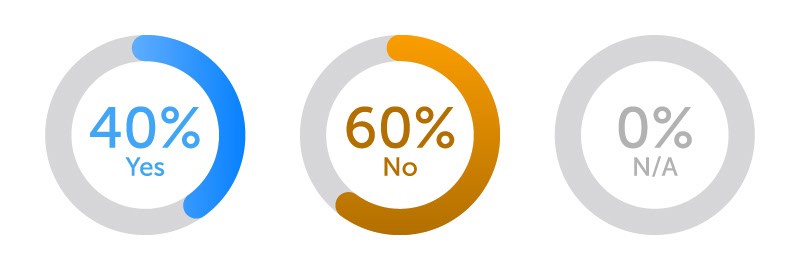
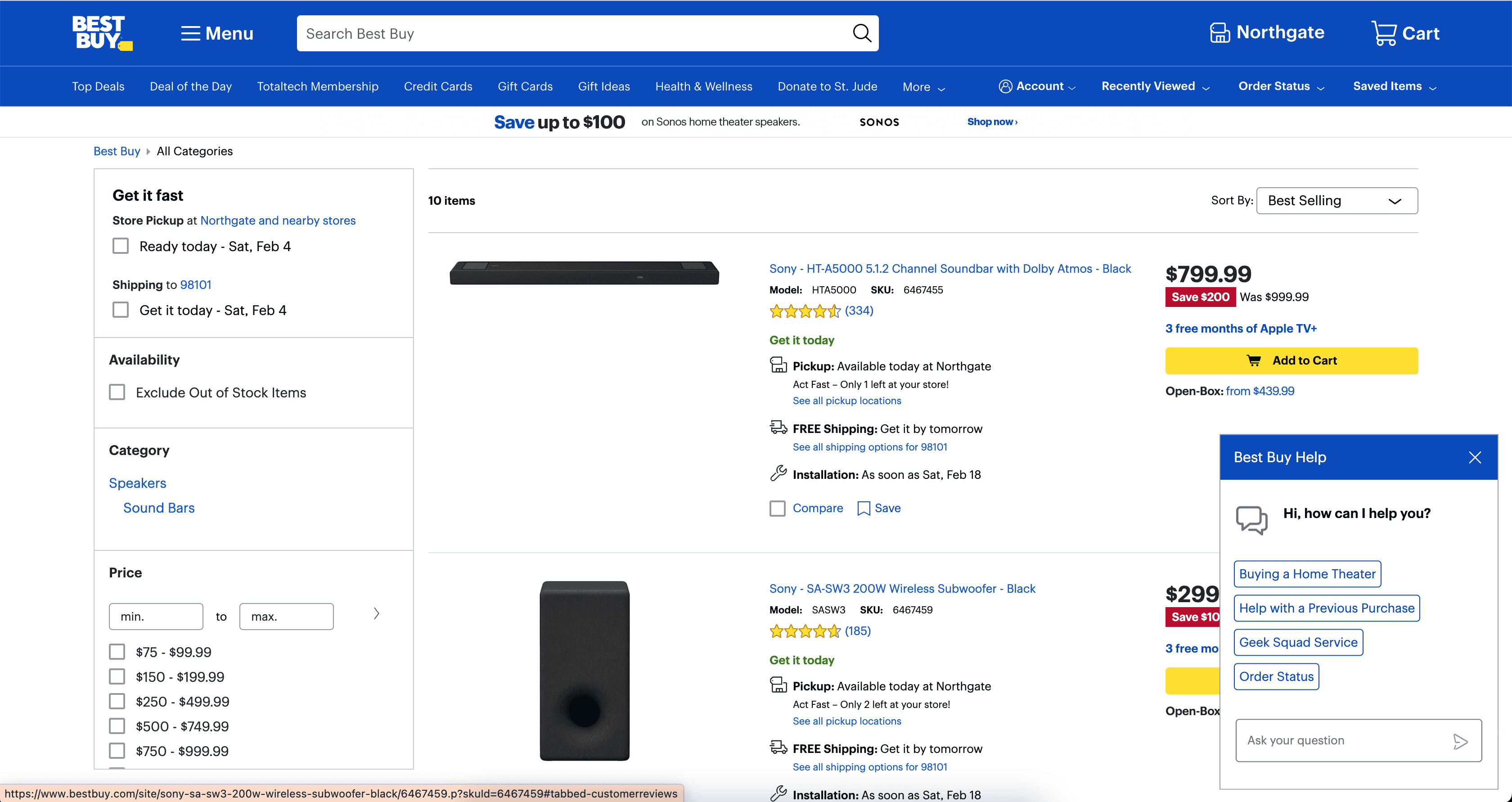
Don’t let the numbers fool you; interactive AI chatbots are the future of customer service, especially for smaller brands or startups that cannot employ large teams of live agents.
The rise of AI technology and language models like ChatGPT makes this feature easier than ever to implement on your site. While most eCommerce AI chatbots leave a little to be desired (by using simple if-then flows based on customers’ selections), we expect these customer service offerings to become more advanced — and ubiquitous — for online stores in the near future.
We’ll also add a caveat here: For those who can afford it, a mix of automated chatbots and live customer service is the gold standard in 2024.
Accordion-Style Checkout
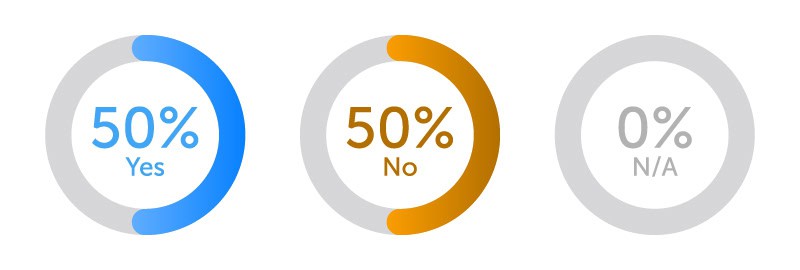
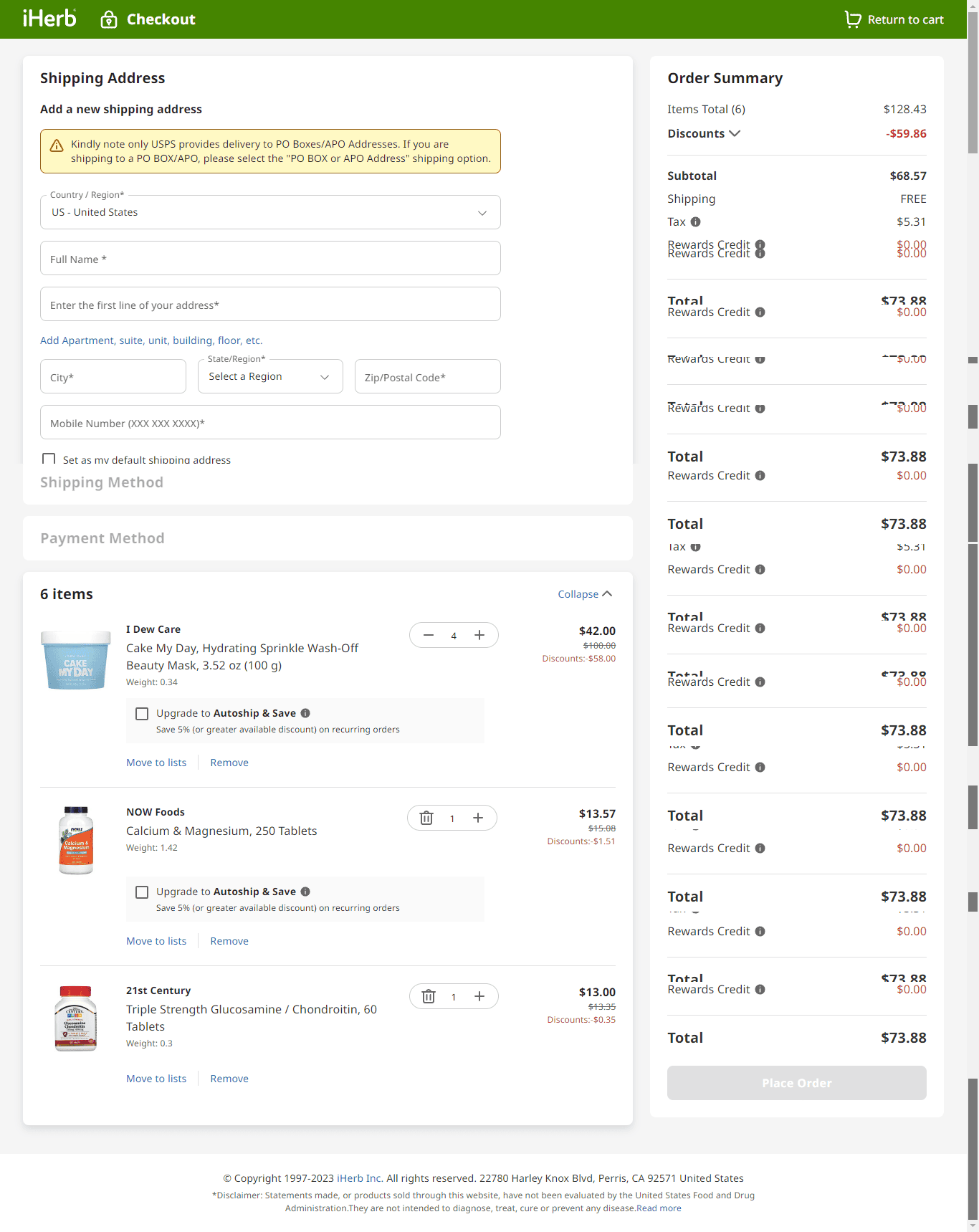
Top eCommerce sites are moving away from traditional one-page and multi-step checkout flows to streamlined accordion-style processes. While the content remains all on one page, each step is expanded as a customer goes through it, reducing friction with slow loading times and/or an overwhelming amount of fields at first glance.
This feature started to gain prominence in last year’s Best in Class report. We recommend eCommerce brands take note and test this approach, if they’re not already using it.
Personalized Navigation Bars
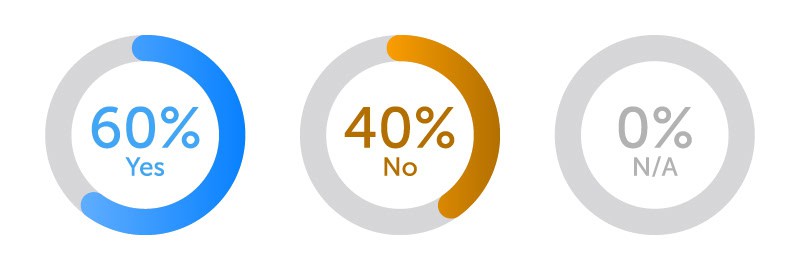
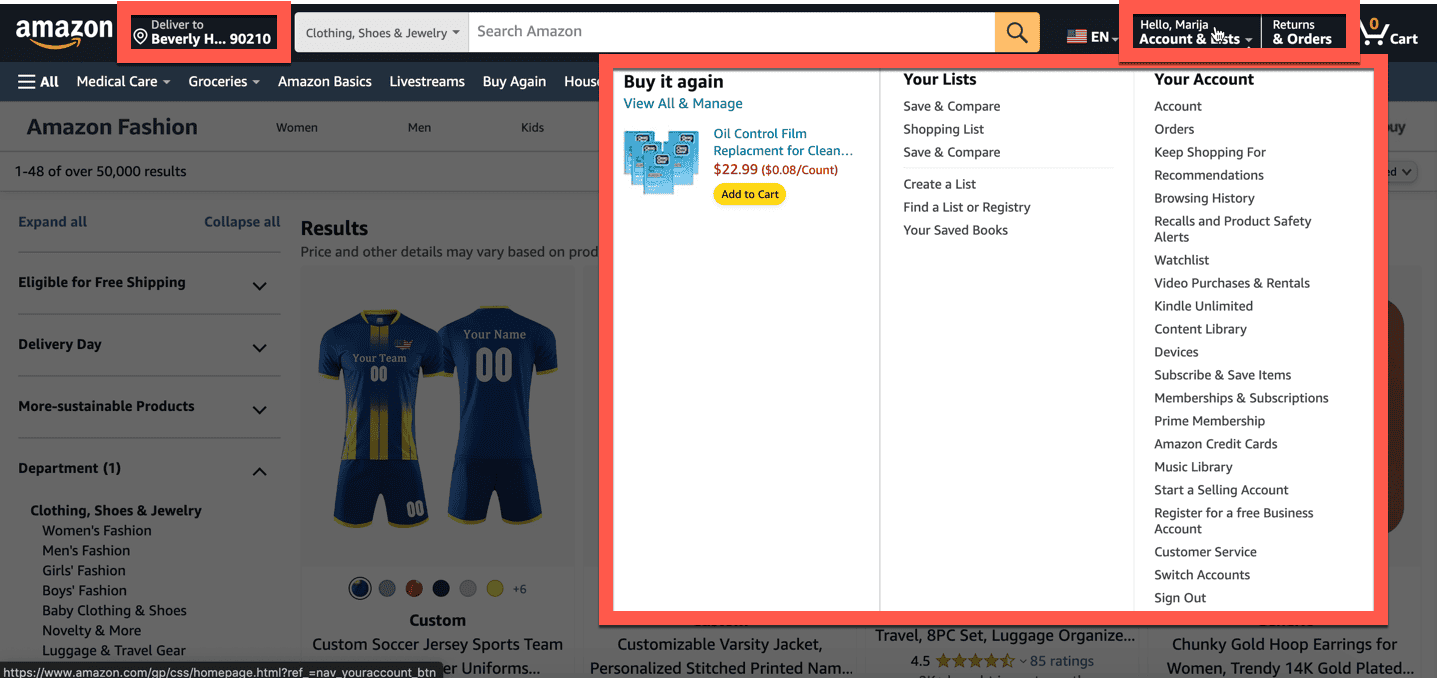
It’s taken some time to catch on, but personalization at the navigation or header level is popping up on more eCommerce sites than ever before. While these features have been difficult to implement and track in the past, AI and MIL models have changed the game, which explains why this feature has gained ground in 2024.
Like with other AI-powered features, we expect to see more personalization across eCommerce sites in the years to come.
Searchable Reviews

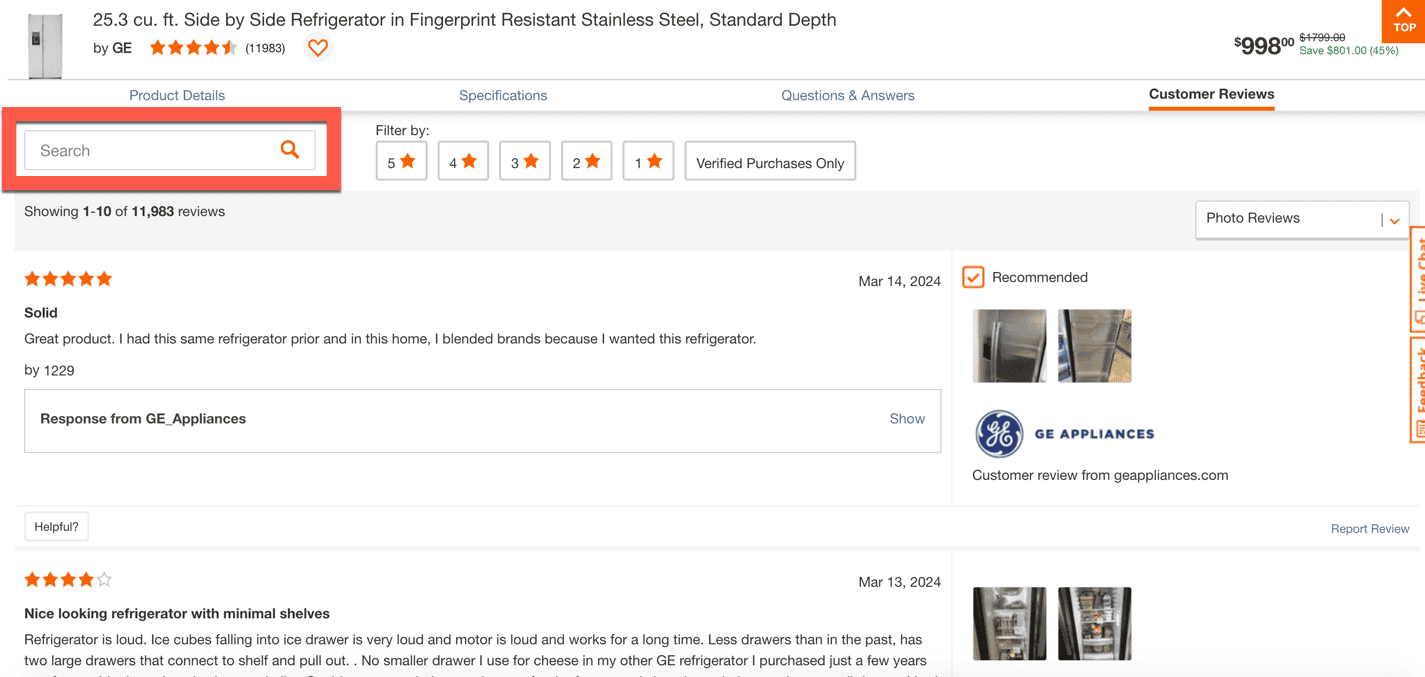
The power of customer reviews in conversion optimization remains unbeaten, and we continue to see eCommerce brands experimenting with their appearance and display to maximize the effects of this social proof on their website conversion rates.
In most cases, our 2024 Best in Class sites have substantial amounts of reviews from customers. To make them easier to sort through, businesses are now adding search functions. These allow shoppers to search through reviews either directly from a PDP or a linked “all reviews for the product” page.
While this feature isn’t necessary for small businesses with few product reviews, we highly recommend this emerging best practice for larger sites.
Legacy eCommerce Features
In comparing our findings this year to our 2023 report, most modern eCommerce best practices remained the same. We’ve included a few of them below.
This is just further proof that testing is required before you change anything on your site. Otherwise, you run the risk of eliminating a continuing best practice and inadvertently harming your eCommerce conversion rates.
Product Flags
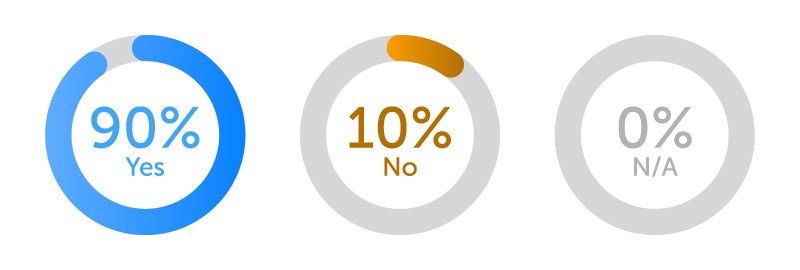
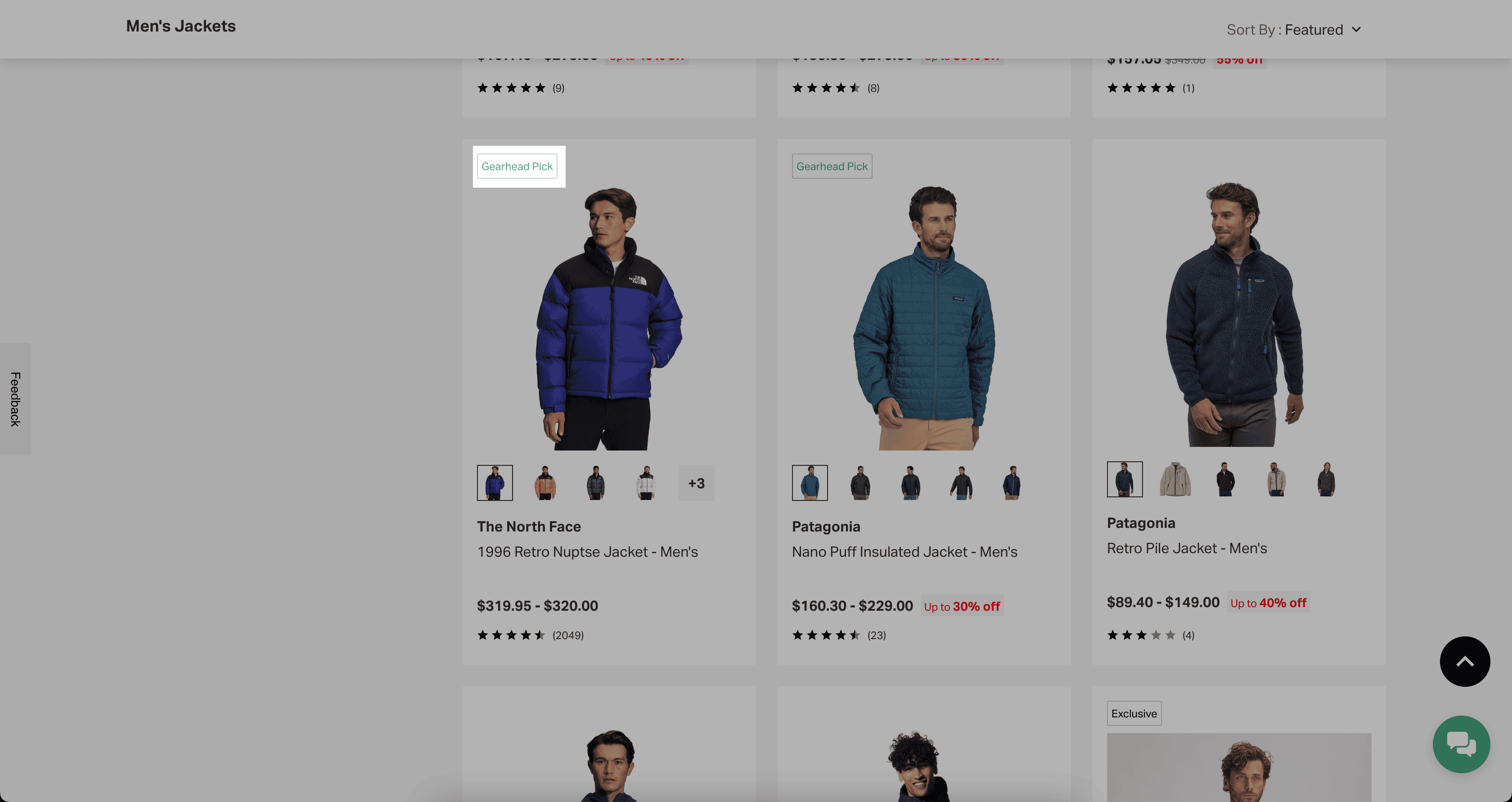
Product flags are now a commonly found best practice across eCommerce sites. By labeling products with key details such as “new” and “on sale,” brands can better catch shoppers’ attention and get them to click on a product page for more information.
In our experience, product flags can be tricky to implement for some sites. If you’re testing this feature, make sure to keep your flags meaningful to your customers. For example, if you use “best seller” on every single one of your products, your brand trust will take a hit among potential customers.
Free Shipping Policies


Thanks to the popularity of Amazon Prime, free shipping options are the standard today, which is why nine out of 10 of our Best in Class sites offer this option.
Free shipping with no minimum is still the gold standard, but few retailers can afford this (20% in our study). Threshold shipping (i.e. over $75) is the best compromise in this situation.
Note: If your brand sells on Amazon, you can use Amazon Buy With Prime to offer free shipping directly on your eCommerce site. Contact our team to beta-test this invite-only program today.
Third-Party Payment Options

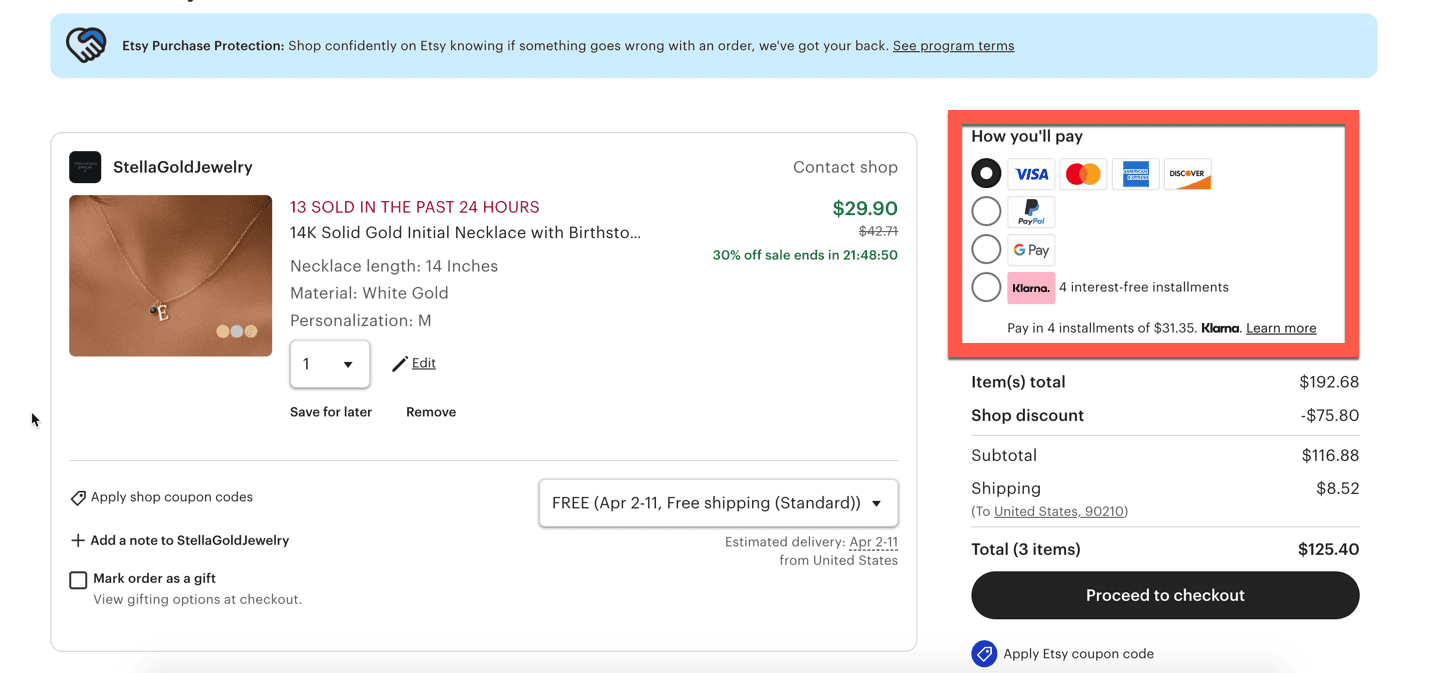
Whether it’s a buy-now, pay-later option like AfterPay or an integrated payment method like PayPal, third-party payment options are non-negotiables for today’s eCommerce businesses.
BNPL services are set to grow by 274% by 2026, which means the majority of our studied sites are ready to take advantage of that growth in customer credit. Is your eCommerce store?
If not, start testing BNPL and third-party payment services now to prevent missing out on the sales enabled by this CRO best practice.
Savings Amount Displayed
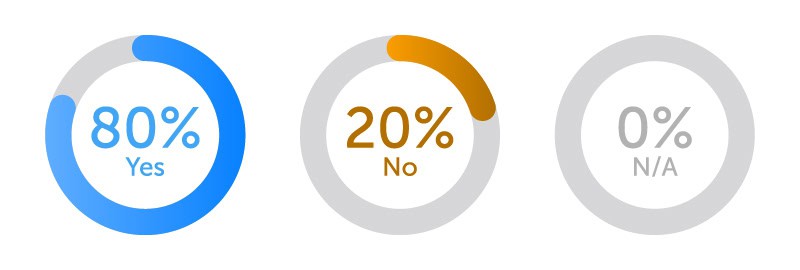
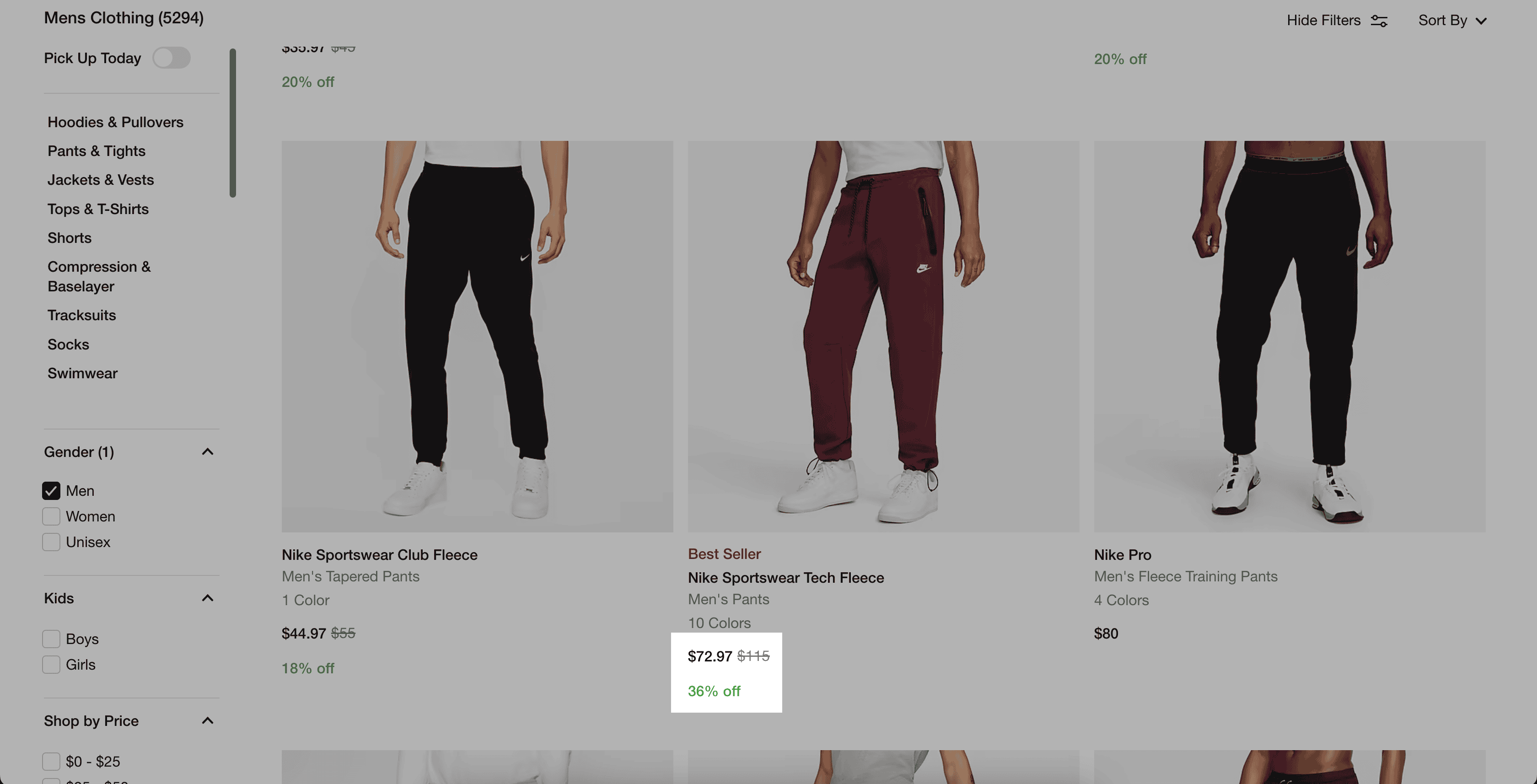
In a time of persistent inflation, highlighting the amount your customers are saving on a potential purchase is an important conversion optimization best practice. These savings can be displayed in either dollar amounts or percentages; which you use will likely depend on your average product price.
Combining this feature with other similar highlights (such as the original price of sale items) can be instrumental in pushing price-conscious shoppers to convert.
Best Practices Trending Downward
Customer behavior is continually changing, and eCommerce sites are responding in kind by testing new features and removing those legacy features are no longer as effective as they once were.
But, before you go axing the following functionalities or design elements from your online store’s website, make sure to always do diligent research and testing.
Who knows? Despite what our survey results show, these conversion optimization best practices may still remain best practices for your website and customers!
Multi-Page Checkouts
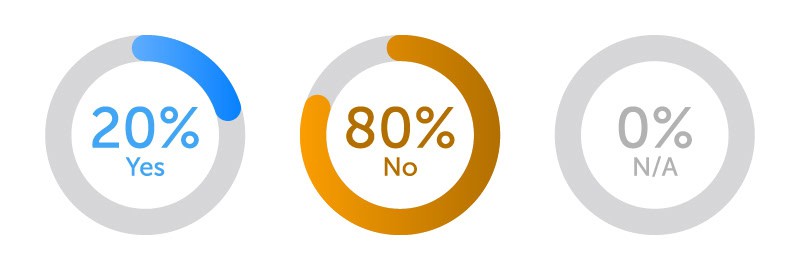
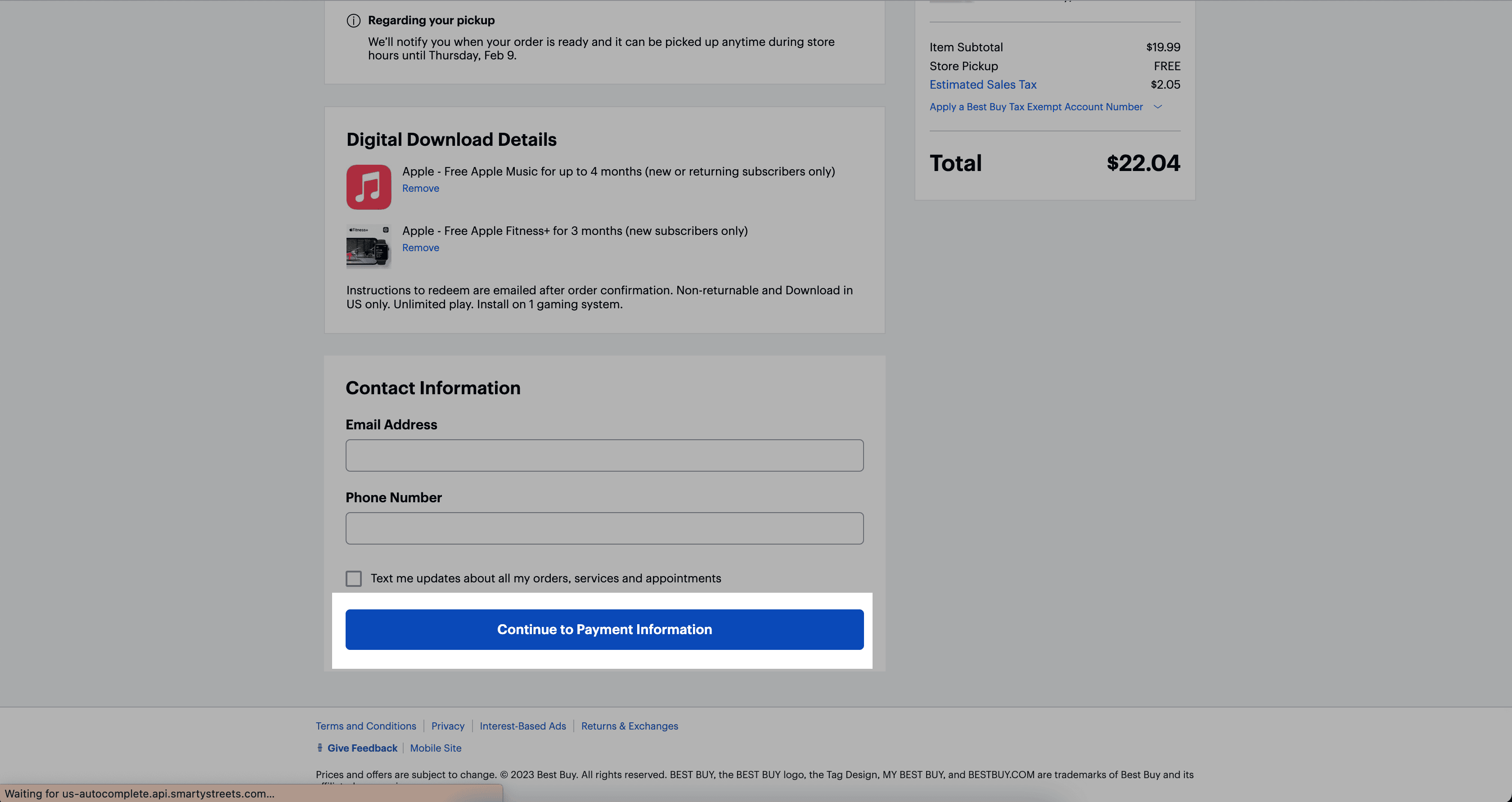
As mentioned above, our team saw some big changes to checkout page design in our 2024 research. The multi-page checkout process — once popular among leading eCommerce brands — is being phased out in favor of a single-page, accordion-style layout.
The one-page checkout process is a thing of the past for online businesses, as only 30% of our researched sites are using this approach. However, a multi-page checkout process can still be the best design for those retailers who sell complex, customizable products.
Because there are so many web store design options available for a checkout flow, we recommend testing and validating your approach before implementing it across your eCommerce site.
Lazy Load
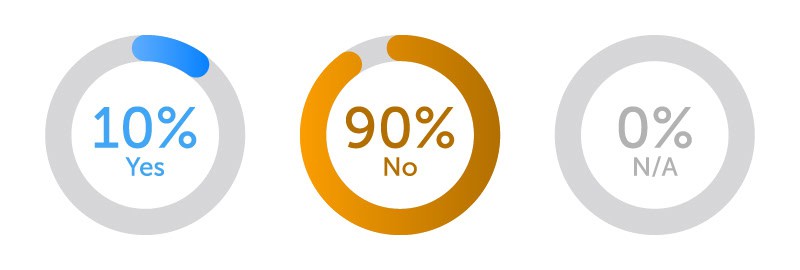
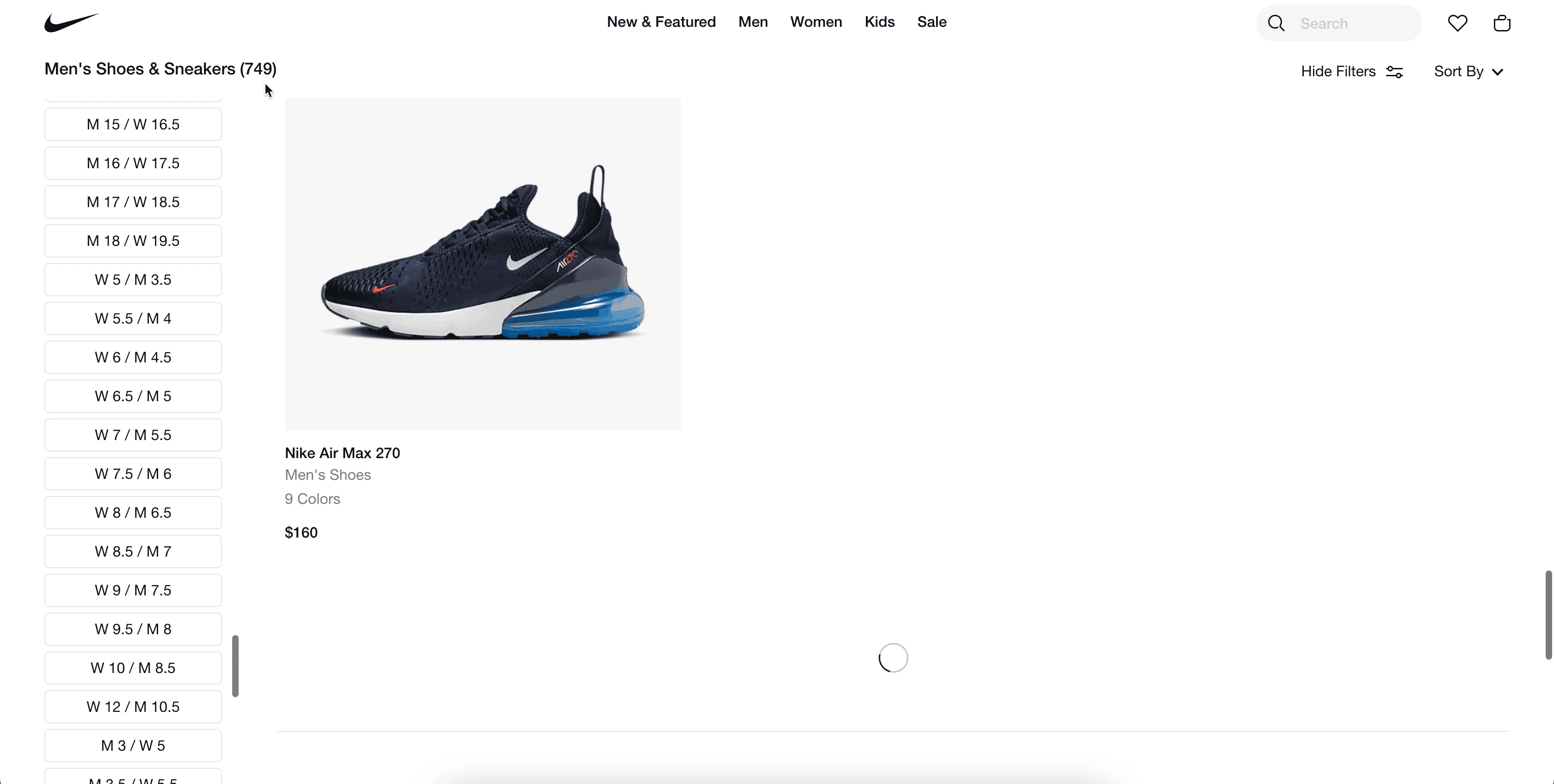
Lazy loading — waiting to render content on a webpage until the user or the browser needs it — was once a popular feature, especially among those larger eCommerce sites with thousands of high-quality images to display on product category pages.
However, as indicated by our 2024 data, lazy load is no longer used by most major retailers, and we’re calling it a best practice trending downward. In our experience, it doesn’t increase conversion rate, although it may have positive search engine optimization (SEO) effects.
Sticky Add-to-Cart CTA

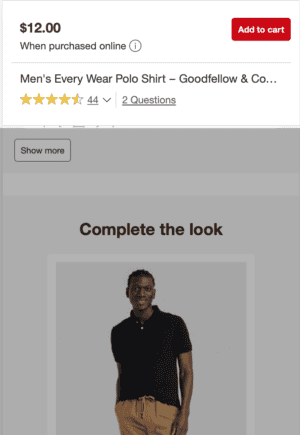
When it comes to sticky add-to-shopping-cart call-to-actions, it looks like major eCommerce sites are finally reflecting what our test results have been indicating for years: It no longer works well from a conversion standpoint.
The feature, which follows a user while scrolling through a page, has fallen in popularity over the years. However, it may work for certain sites and target audiences, which is why (like with every other feature on this list) we recommend testing its usage before fully implementing it (or removing it from) your website.
Pinch to Zoom (Mobile)


Previously, mobile CRO best practices championed the “pinch to zoom” feature when viewing product images. However, this is quickly falling out of fashion among leading retailers, with this year marking the first that the minority of studied sites are using this feature.
The better option: A simple click-to-zoom, which offers a smoother customer experience for shoppers across any mobile device.
Get the Complete List of Insights by Downloading Our Report Now
As mentioned, these are just a few of the CRO insights we found among our hundreds of hours of testing. To read our other 150 findings — including insights on homepage navigation, landing page elements, navigation menu design, auto-ship offerings, and more — download the full report below.
Download Our eCommerce Best in Class 2024 Report Now.
Have further questions about our 2024 Best in Class Report? Want help creating a custom testing and conversion rate optimization plan for your eCommerce website?











0 Comments